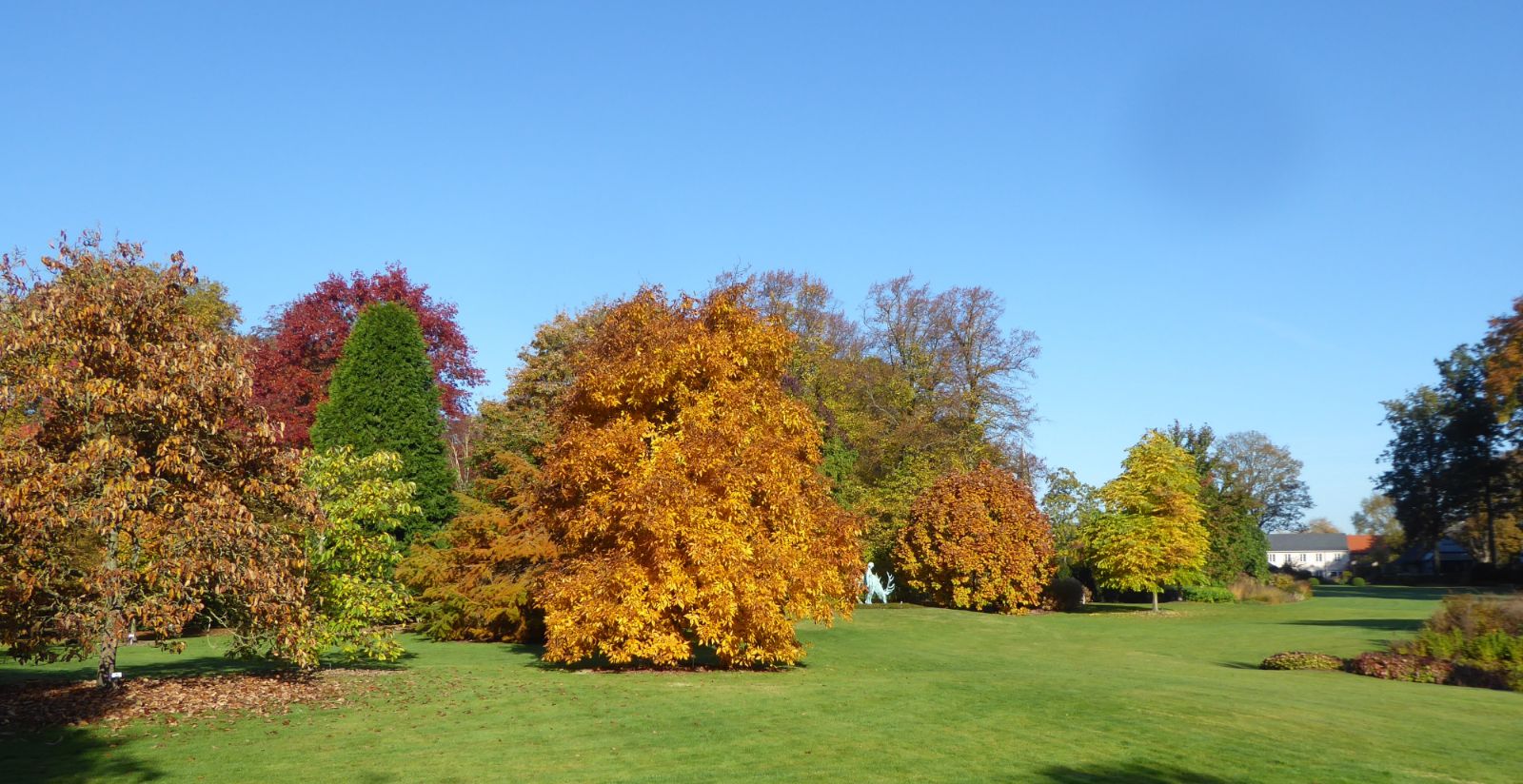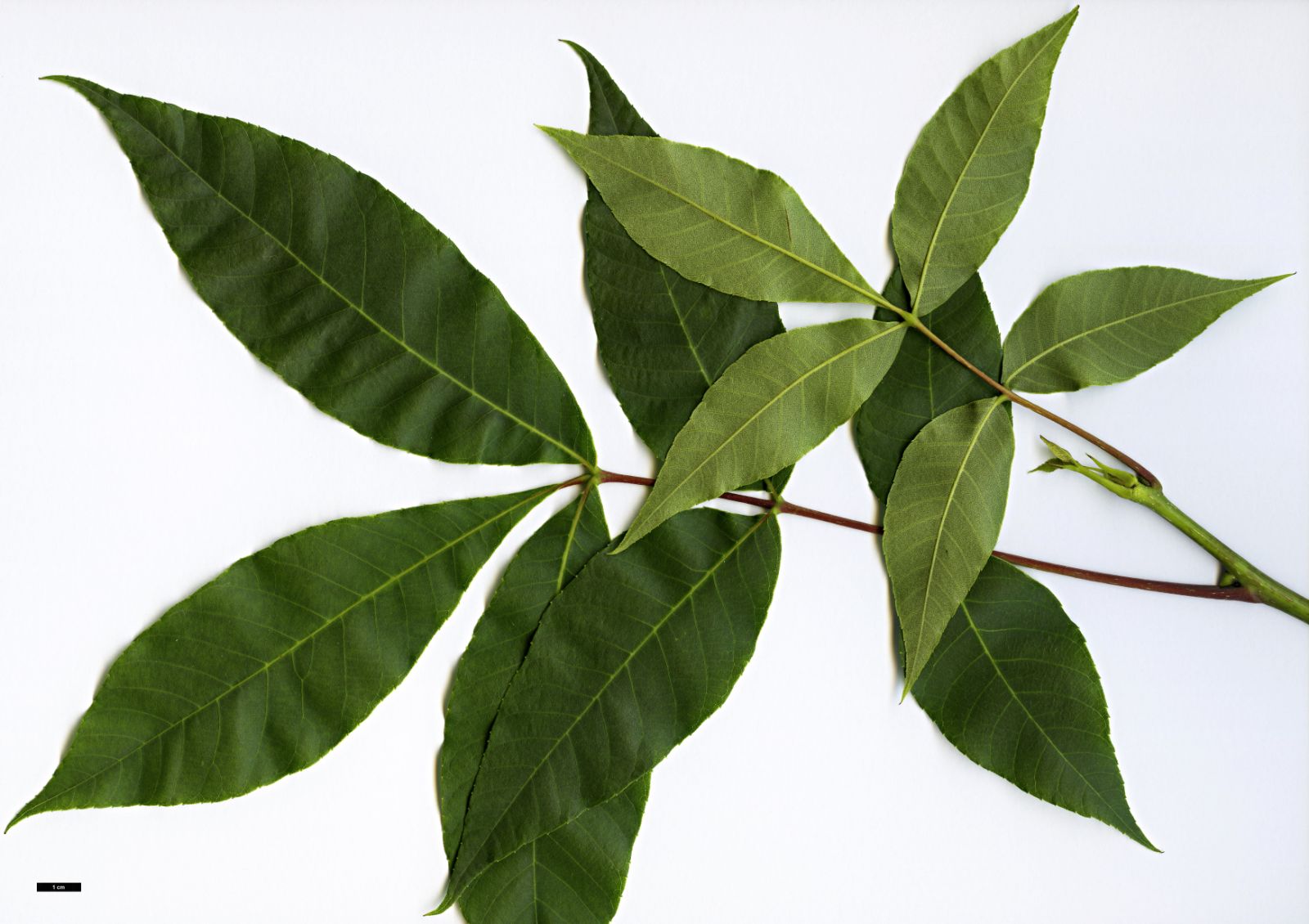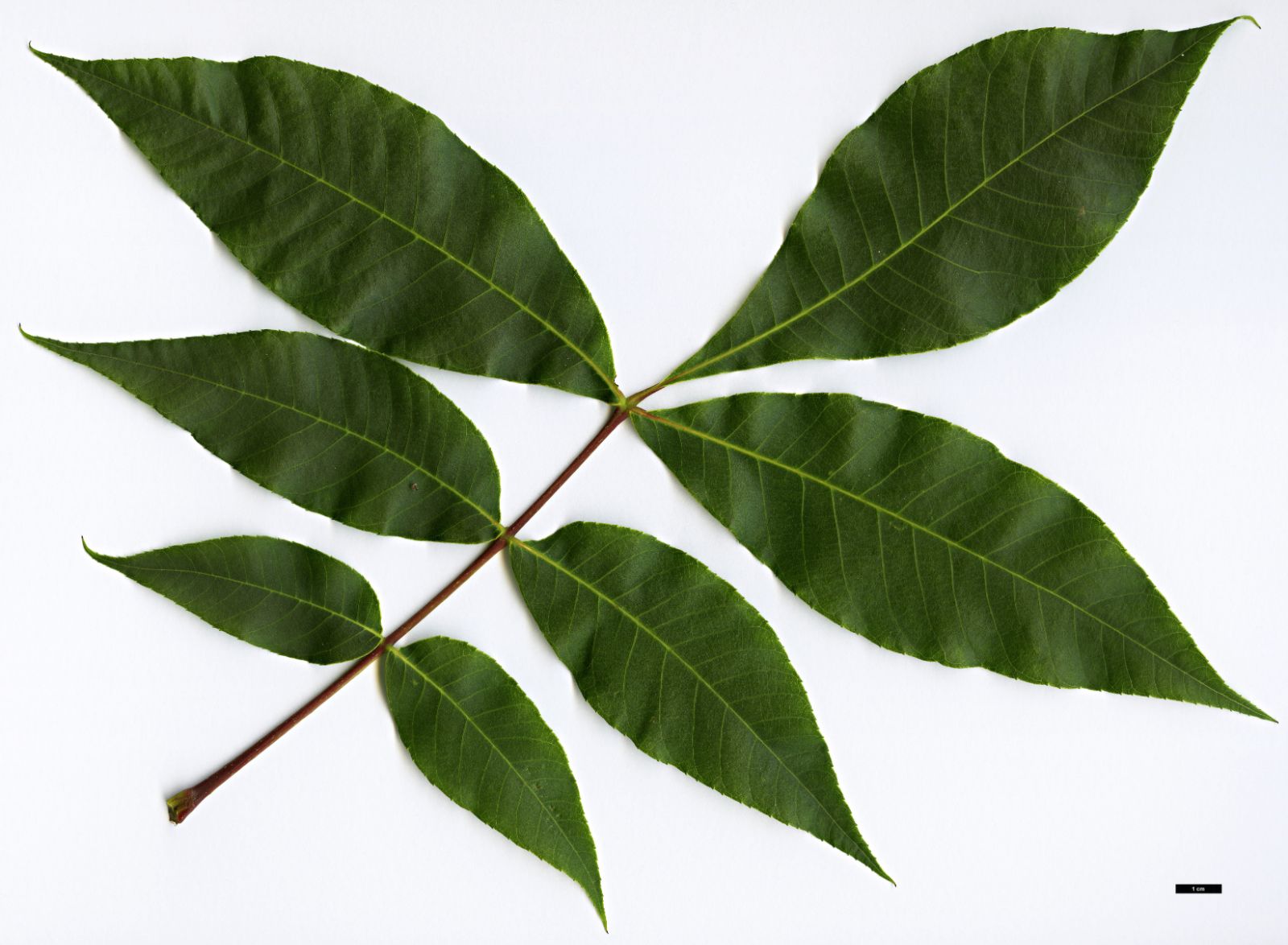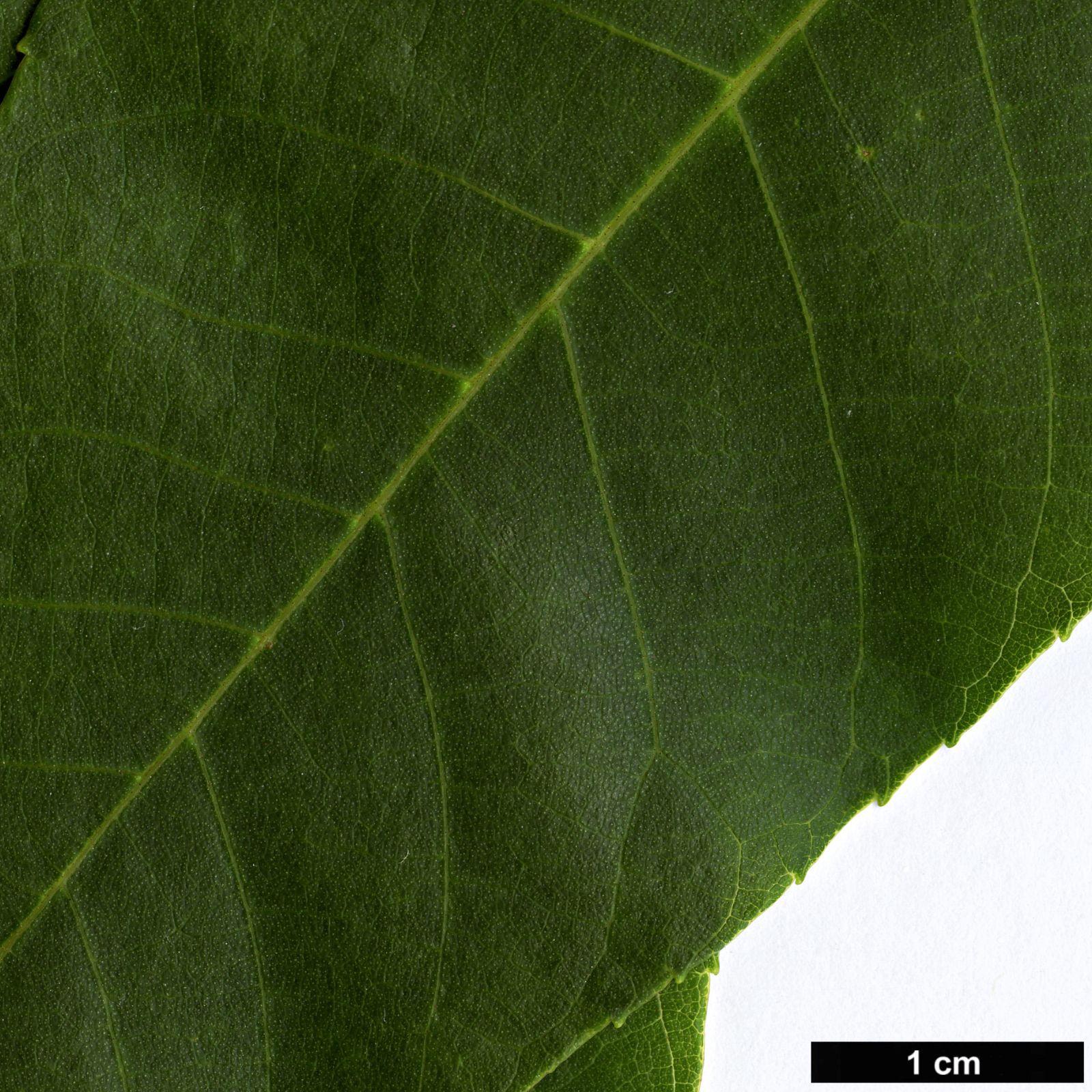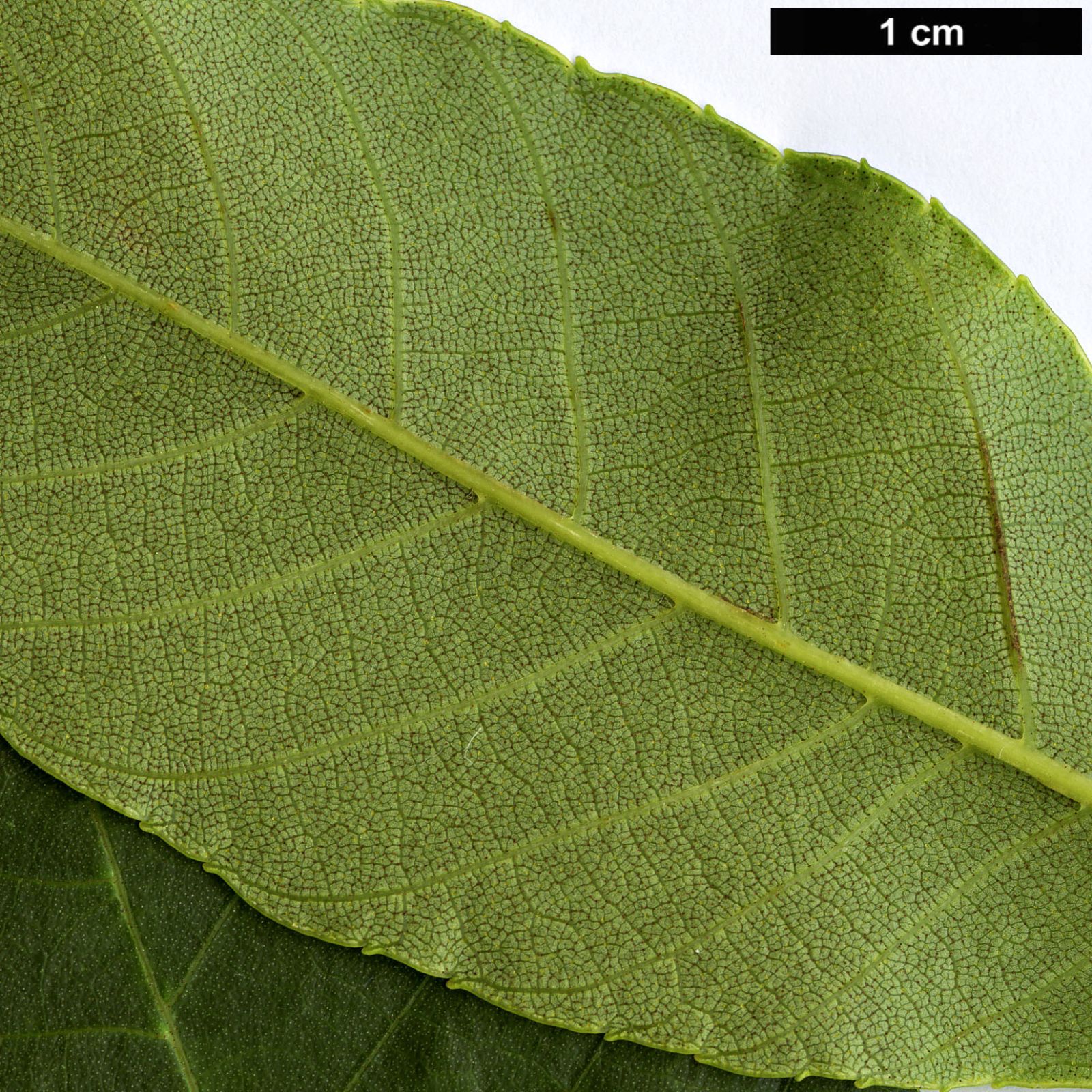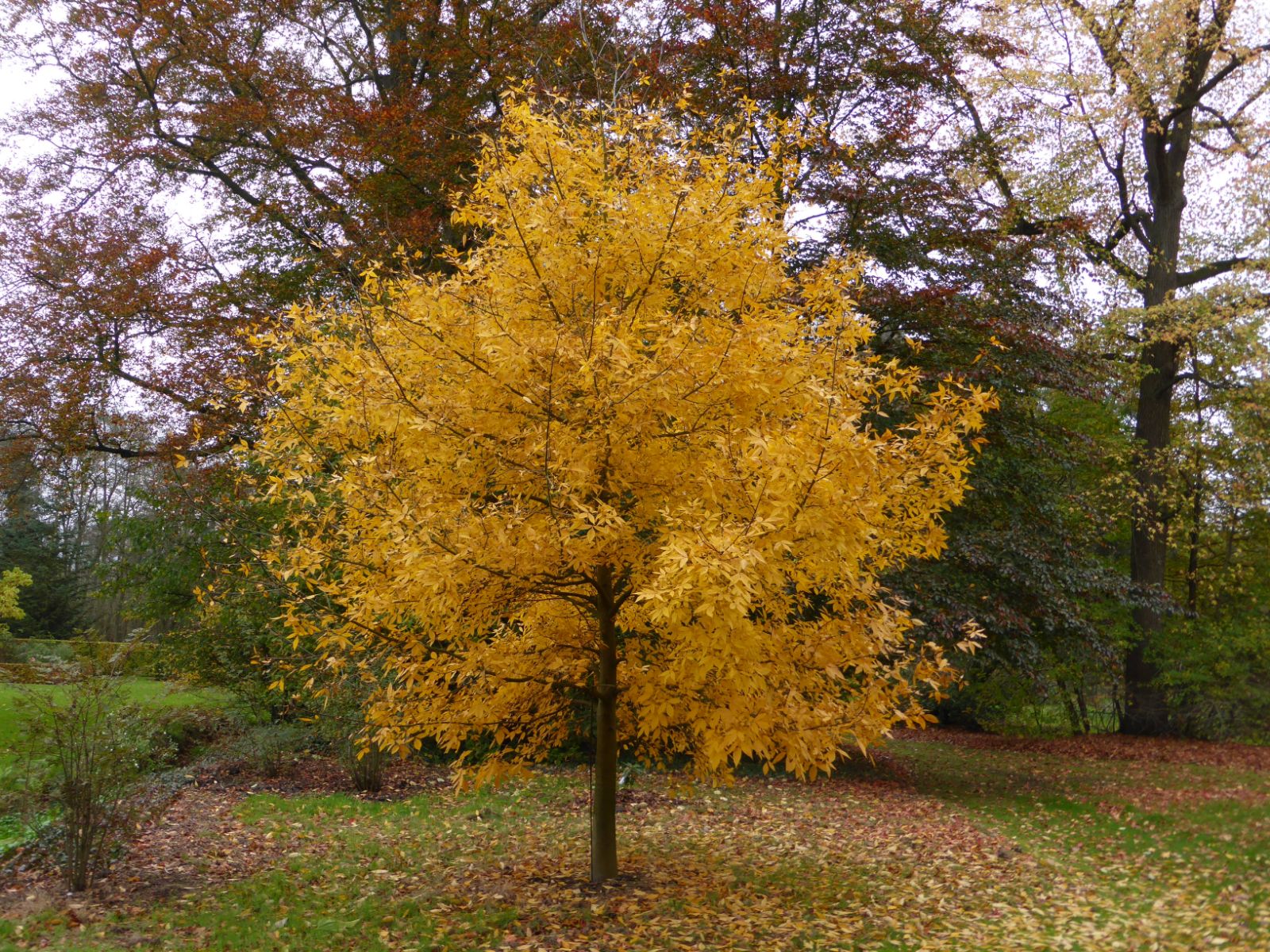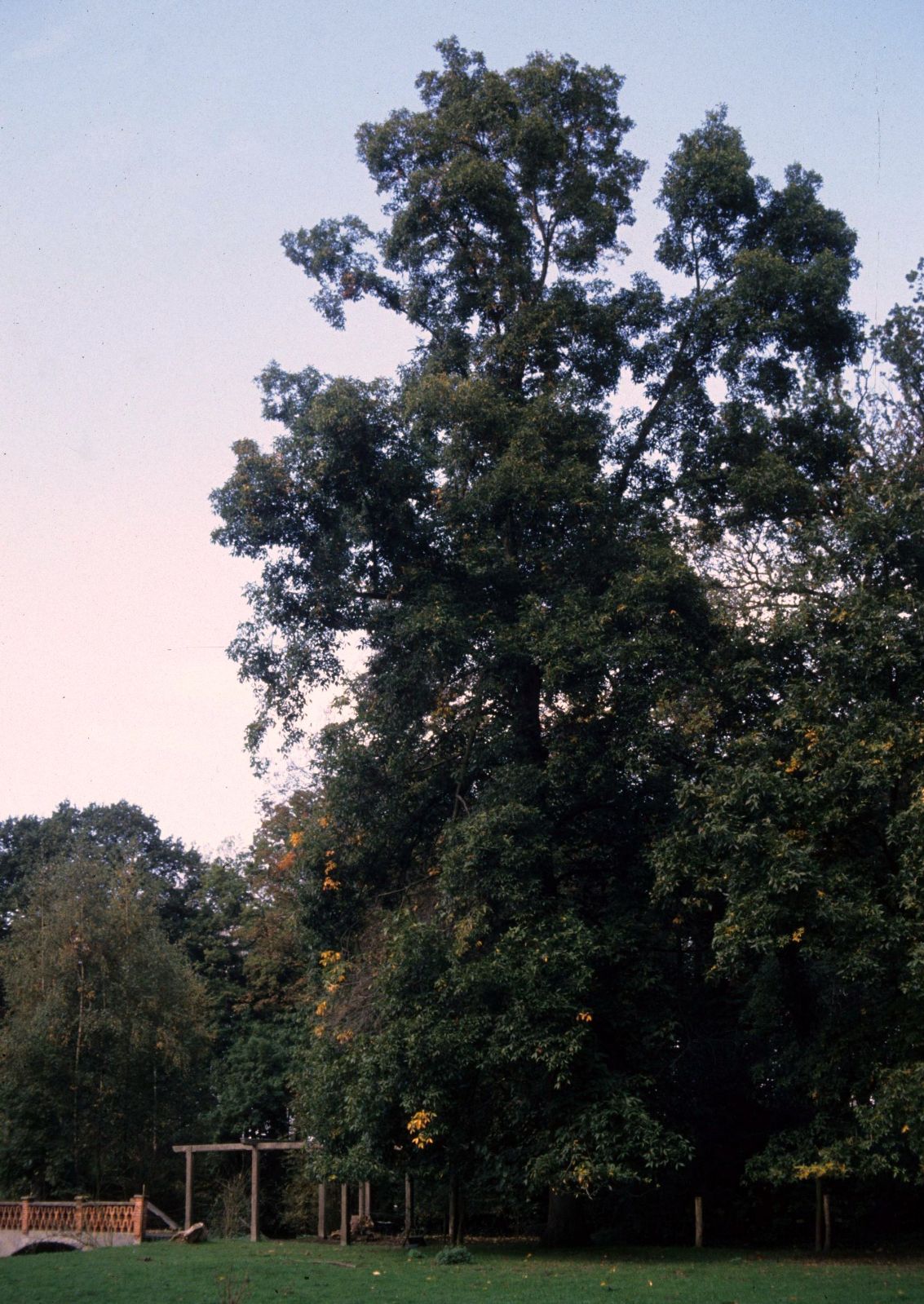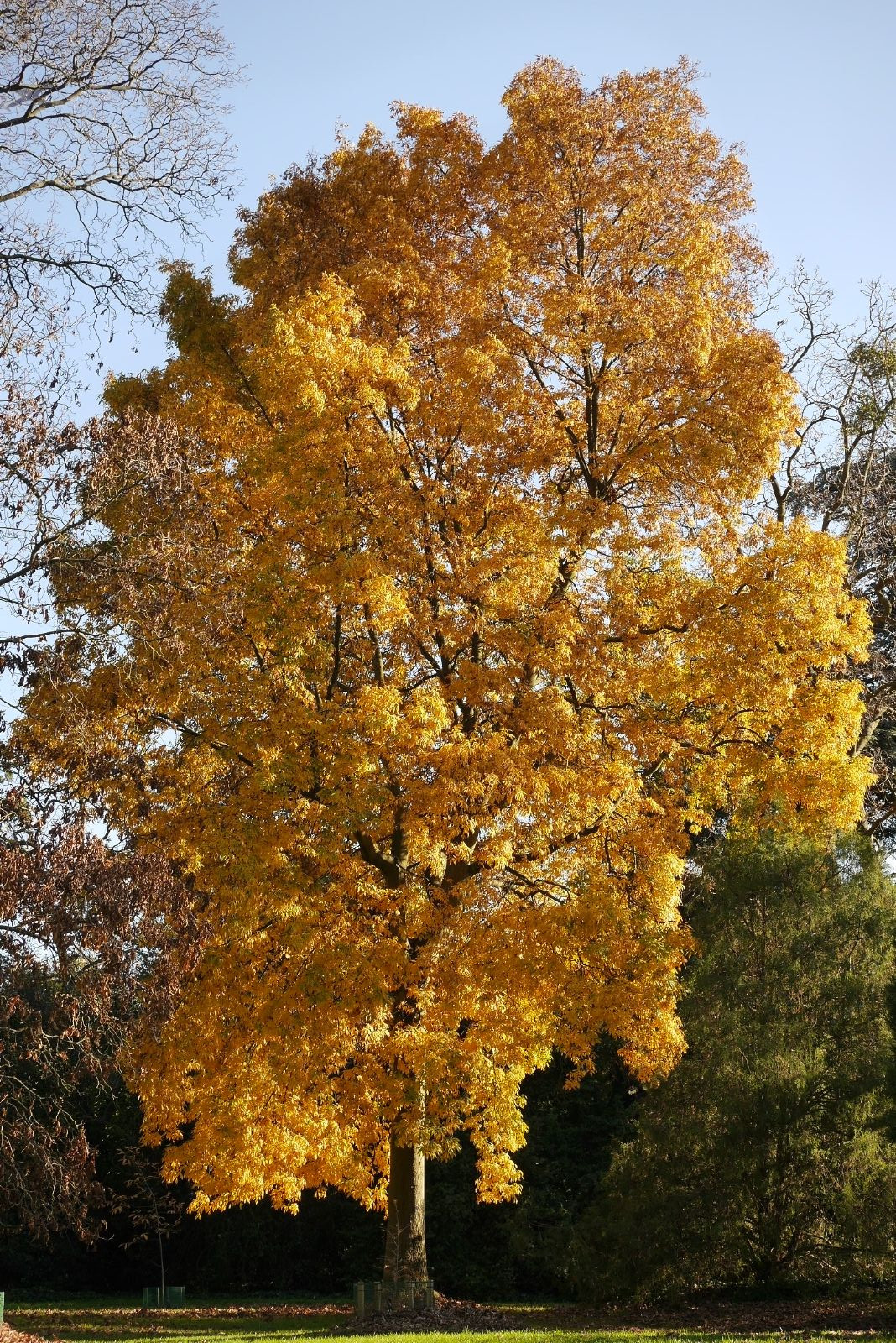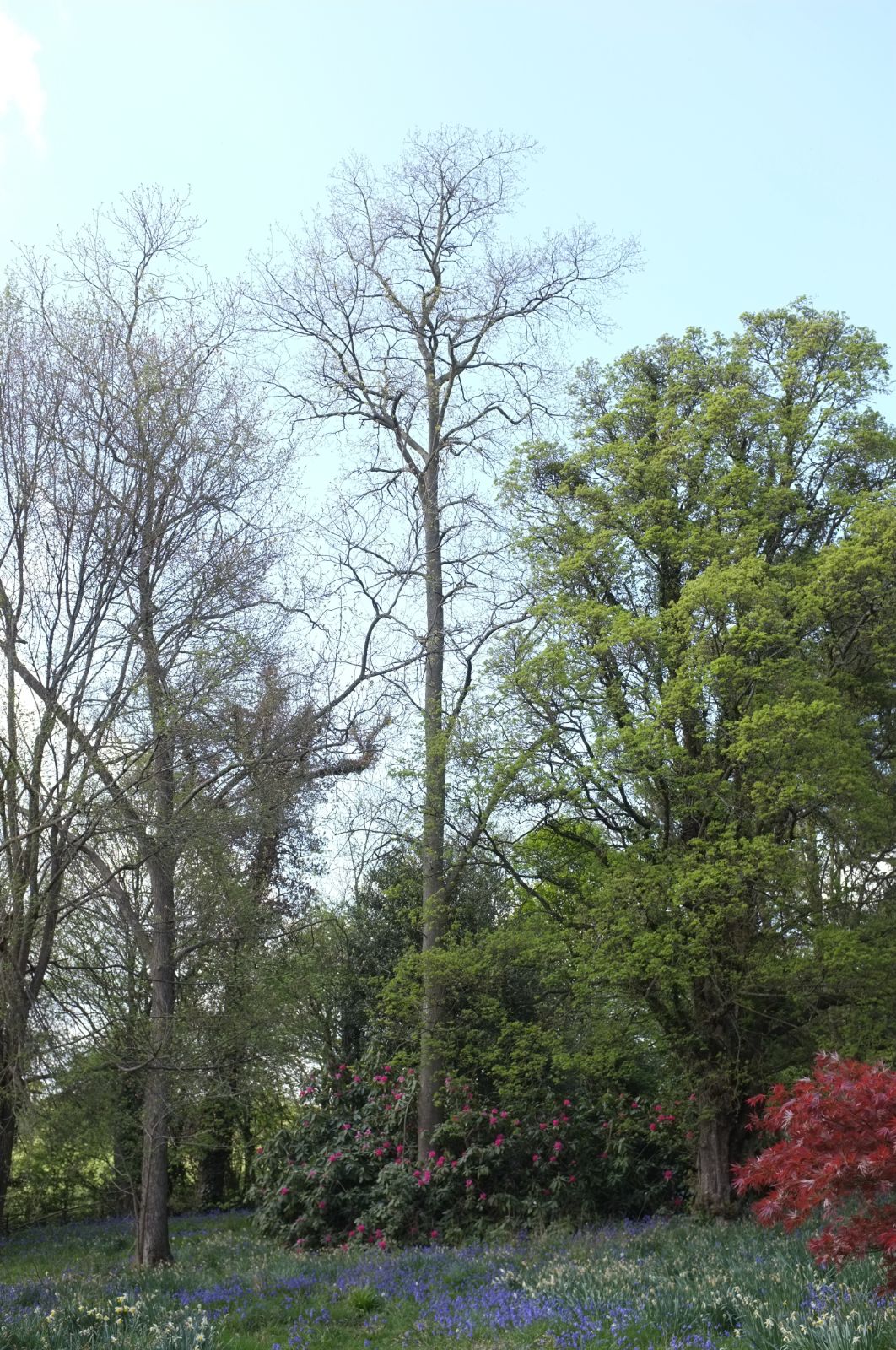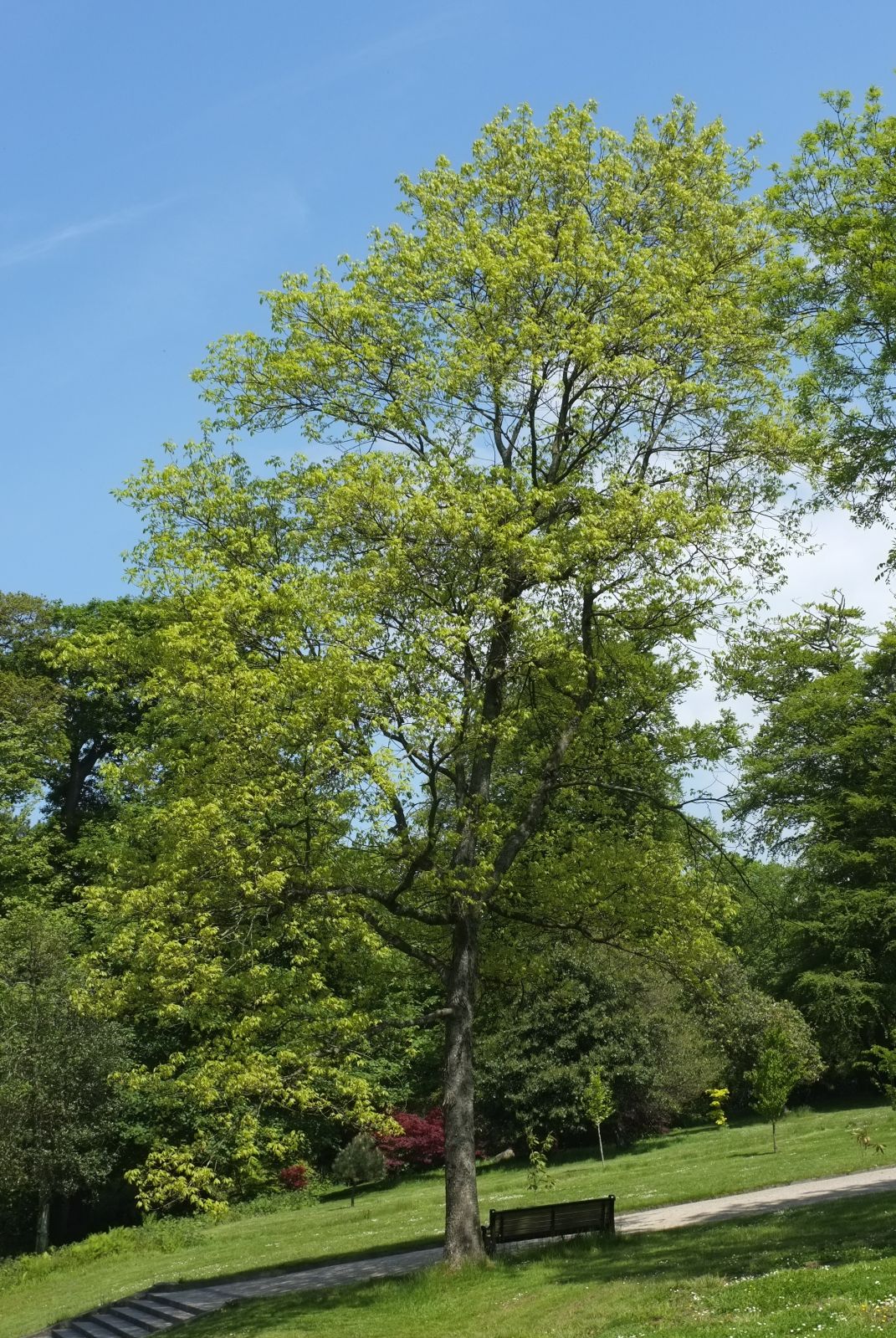Carya glabra
Sponsor
Kindly sponsored by
a member of the International Dendrology Society
Credits
Julian Sutton & Dan Crowley (2020)
Recommended citation
Sutton, J. & Crowley, D. (2020), 'Carya glabra' from the website Trees and Shrubs Online (treesandshrubsonline.
Genus
Common Names
- Pignut Hickory
Synonyms
- Juglans glabra Mill.
- Carya porcina Nutt.
- Carya ovalis (Wangenheim) Sarg.
Medium tree to 30 m. Bark light grey, smooth or fissured or exfoliating in plate-like scales or strips. Branchlets reddish-brown, slender, virtually glabrous or sparsely scaly. Terminal bud ovoid, 0.5–1.5 cm long, reddish-brown to tan; bud scales imbricate, scaly, glabrous to pubescent. Leaves deciduous, imparipinnate, 20–30 cm long; leaflets (3–)5–7(–9), ovate to obovate or elliptic, 4–21 × 2–10 cm, upper surface largely glabrous, scaly when young; lower surface glabrous or sometimes pubescent with unicellular and 2–4-armed hairs, large peltate scales and small irregular, round and 4-lobed peltate scales at first, later glabrous; margins finely to coarsely serrate, apex acuminate to narrowly acuminate; lateral petiolules 0–0.1 cm long, terminal petiolules 2–1.8 cm; petiole and rachis glabrous to pubescent; petiole 3–14 cm long. Male catkins to 13 cm long, glabrous or pubescent. Fruits pale to reddish-brown, 2–4.5 × 2–3.5 cm, obovoid to globose, splitting to the middle or base; nuts compressed or not. (Bean 1976; Stone & Whittemore 1997, Whittemore 2013).
Distribution Canada Extreme south of Ontario United States Eastern and central states, from Maine and Illinois south to Florida and eastern Texas
Habitat From wetland margins and flood plains, to well-drained sandy soils, rolling hills and slopes, and thin, dry, rocky soils, 0–800 m.
USDA Hardiness Zone 4-9
RHS Hardiness Rating H6
Conservation status Least concern (LC)
Pignut is the commonest hickory of the Appalachian forests, a moderately shade-tolerant canopy tree. A common suburban shade tree in its native range, mainly through pre-existing specimens surviving development (Smalley 1990), it has also been used as an ornamental in Europe. It can produce a fine show of yellow in autumn. Dirr (2009), clearly a fan of Carya in general, singles this species out as ‘an absolutely beautiful tree’.
The essentially glabrous leaves (hence the specific epithet) with typically 5 or 7 leaflets, the terminal one usually largest, are the starting point for identification. This is, however a very variable – arguably polymorphic – species, with an impressively broad ecological range. It has exercised naturalists and taxonomists in the United States for well over 100 years. The main question is whether or not to segregate C. ovalis, the Red Hickory, as a distinct species.
Manning 1950 found the extremes so different that he separated the species, whilst acknowledging that intermediates are frequent. Flora of North America (Stone & Whittemore 1997) takes the opposite view, not recognising the Red Hickory even at varietal rank, considering it an intergrading extreme form of a highly polymorphic C. glabra. We follow this treatment but it is worth describing the differences since Red Hickory is not an uncommon tree.
Typical C. glabra has usually 5 leaflets; pear shaped fruits with smooth husks which do not open fully; ‘tight’ bark in mature trees. It tends to be found in moister sites in valleys.
Typical ‘C. ovalis’ has usually 7 leaflets; fruits which are not pear shaped, with warty husks, sometimes winged along the sutures and tending to dehisce fully; and bark which separates into long, thin strips. It tends to grow in drier upland sites, and may range further north and west (Manning 1950; Stone & Whittemore 1997; Grauke 2003; Lance 2004).
C. glabra also intergrades in the wild with C. floridana, C. pallida and C. texana (Stone & Whittemore 1997). Together they form a tight-knit group of tetraploid species. Molecular studies of the sort, which are unravelling the complex and reticulate patterns of evolution in Juglans would be welcome here, but the results may well make taxonomic decisions no easier.
The Pignut is a choice timber tree; along with other true hickories the wood is used for tool handles, furniture making and firewood. Its nuts are usually bitter (perhaps always, reports are confusing), and seem not to have been eaten by Native Americans (Moerman 2019) or European colonists. They are taken by squirrels and chipmunks, however: this presumably increases the range of dispersal (Smalley 1990).
Cultivated in the United States since 1750 (Kurz 2003) and introduced to the United Kingdom in 1799 (Bean 1976), there are many fine mature examples of C. glabra in gardens, which colour exceptionally well in autumn. There is a strong concentration in the south of England, but few of the largest are accessible to the public. The UK champion, at Warnham Court, West Sussex, was measured at 26.5 m × 51 cm in 2017. More accessible specimens include one in Canizarro Park, Wimbledon, London (24 m × 48 cm, 2013) and in Ireland a tree of 24 m × 41 cm (2015) at Mount Usher, County Wicklow (The Tree Register 2019).
In continental Europe, monumentaltrees.com (2019) records just four sizeable park specimens in the Netherlands and Germany. In North America it is rarely cultivated outside its native range (Jacobson 1996); a group at the Hoyt Arboretum, Portland, Oregon, dating from 1928 illustrates its potential in the Pacific Northwest (Hoyt Arboretum 2019).
Like other true hickories, C. glabra is slow to establish. The usual issue of hickory taproots has limited its appeal to the nursery trade.

